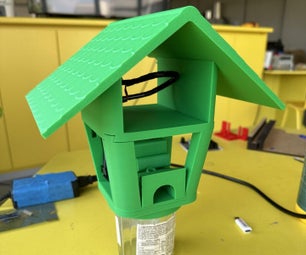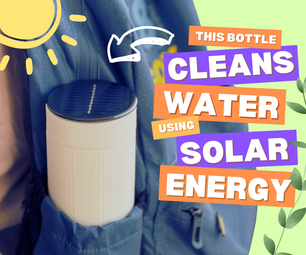Introduction: Soldering Clean Wire Splices
Here's a quick tip about properly splicing cables. This is handy for changing the connector on your solar panel, or simply making any two-wire cable longer.
This may seem like a basic skill, but I know that by the time I learned this technique, I wished someone had told me earlier.

You will need:
- Wire strippers
- Heat shrink tubing
- Helping hands tool
- Soldering iron
- Tweezers (optional)
- Solar panel, battery pack, headphone cable, etc. you wish to splice
To keep up with what I'm working on, follow me on YouTube, Instagram, Twitter, Pinterest, and subscribe to my newsletter. As an Amazon Associate I earn from qualifying purchases you make using my affiliate links.
Step 1: Cut & Prepare
Start out by cutting your wires and stripping off the outer layer of insulation. Slide a big piece of heat shrink tubing onto one side of the wire, which we'll use at the end to seal everything up.

Strip and tin the inner wires, and apply smaller bits of heat shrink to one side.
Step 2: Arrange Asymmetrically & Solder
The trick here is to get the pair of connections to be the same length, but offset the solder joints. This has the benefit of not bulking up the cable with stacked connections, and also keeps the connections away from each other, minimizing risk for short circuits.
For the cleanest end result, cut the wires asymmetrically as shown. Don't forget the heat shrink tubing before tinning and soldering the wires together. If they don't turn out exactly the same, you can reheat the longer one to adjust. Match red to red and black to black (or white to black as in my case), then heat up the heatshrink tubing to insulate the solder joints.
Step 3: Seal It Up!
Repeat to insulate the entire junction with the larger piece of heatshrink tubing, and you can hardly tell there was any wire surgery!
Thanks for reading my Instructable! Check out my profile to see my other projects— here are some others you might like:
- my free Instructables Arduino Class
- my free Instructables Internet of Things Class
- 3 Beginner Arduino Mistakes
- 5 Tips for Documenting DIY Projects
- YouTube Subscriber Counter with ESP8266
- Foot Switch Camera Trigger for GH4
And to keep up with what I'm working on, follow me on YouTube, Instagram, Twitter, Pinterest, and Snapchat.











